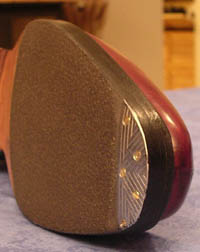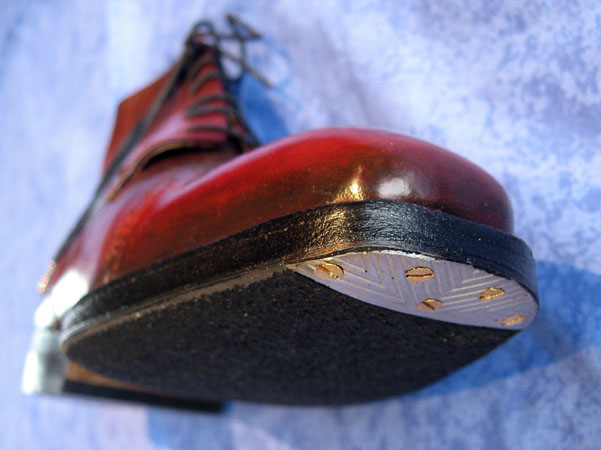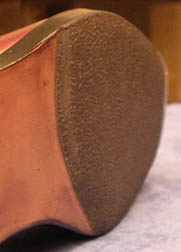- Joined
- Nov 12, 2007
- Messages
- 1,949
- Reaction score
- 1,543
I can understand that some people would find rubber inserts aesthetically unpleasing. It is true that they make a sole slightly thicker and that might be a turn-off.
But as for the fact that they damage the sole in the long run because they prevent the sole to breath, it is simply a mis-conception, illustrated by the following:
"Moisture will always move from wet to dry unless it hits a barrier like the Topy and then it stops moving and additional moisture just builds up as it has nowhere to go."
This is a fallacy, and just goes to show a basic lack of knowledge of how a goodyear sole is actually constructed (given the brands mentioned in this thread, I assumed a goodyear construction is what people are referring to). Perspiration does not go through the sole, to exit on the outside of the shoe. This is because the filling that is used between the insole and the sole is made of a compact mix of cork and glue, or rubberized cork. You can find an illustration of this in the book "La chaussure pour homme faite main", page 159 (it's in French, but the picture is quite telling). That glue / rubber around the cork acts as a natural barrier, and prevents the perspiration captured in the insole to reach the sole. The way moisture escapes is the same way it got in in the first place: through the insole, hence the necessity of not wearing shoes two days in a row, to allow it to breathe.
Someone made a very pertinent remark: virtually all the high end shoe makers (C&J, etc.), do offer models that have a thin dainite sole. Of course, they are not as elegant as their full leather sole counterparts, but do you really believe these manufacturers would propose, at several 00's pounds, shoes that are so structurally flawed that they will rot from the inside as the dainite "traps" the moisture?
This was confirmed to me by some of the top cobblers in Paris, notably at the Cordonnerie Duret in the 17th, whom I rate as one of the best in this city.
Secondly, not all rubber inserts are born equal: Topy's are actually cheap, thick, rigid crap made of vulcanized rubber. On the other end of the spectrum, you have inserts made of natural rubber, that are thinner, more flexible, and virtually invisible unless you look directly under the sole. Illustration:



I, for one, have been using such inserts for the past 15 years. One familiar with stair cases in Paris' older buildings knows that they are made of wood that periodically gets waxed, making them extremely slippery to climb with full leather soles. I fell twice, and consider myself extremely lucky I did not break any bone, given I went down an entire floor on ******. Subsequent to which I had all my shoes "proofed" with similar inserts as described above. They also ensure a much better grip on wet floors. It can be a real hazard walking on wet pavement with full leather soles.
I have never had any problem of durability on any of those shoes. I get the inserts replaced from time to time. Occasionally, when the sole itself gets tired or the stitching shows signs of weaknesses, I get them fully re-soled (and subsequently they do get an insert as well), and there has never been any problem. But of course, I respect the cardinal rules: I never wear them two days in a row, systematically put wooden shoe trees after wearing them, and polish / cream them regularly. Do this, and a high quality shoe will virtually last forever, rubber insert or not.
Well presented. I couldn't agree more.
There's no winning or losing this debate. The argument of sole guards compromising a shoe for any reason is total bunk. Rather, it's a personal preference. If you like them then continue to use them. If you don't, then don't. If you never tried them, then try them on a less expensive pair and decide for yourself.
I've never seen a shoe short-lived because of sole guards. I've seen many with prolonged life as a result of using them. Others just like the look and or feel of walking on leather.


![lurker[1].gif](https://www.styleforum.net/images/smilies/lurker[1].gif)



